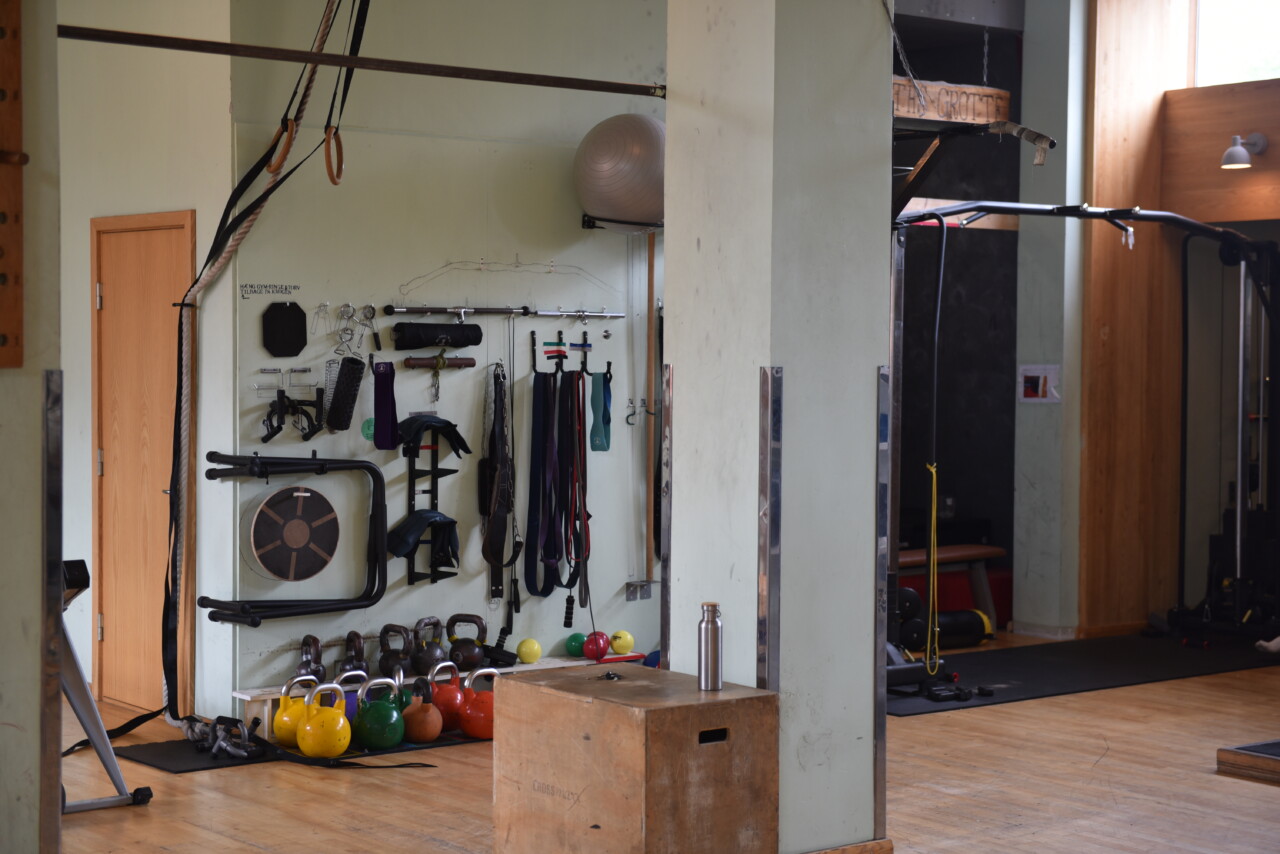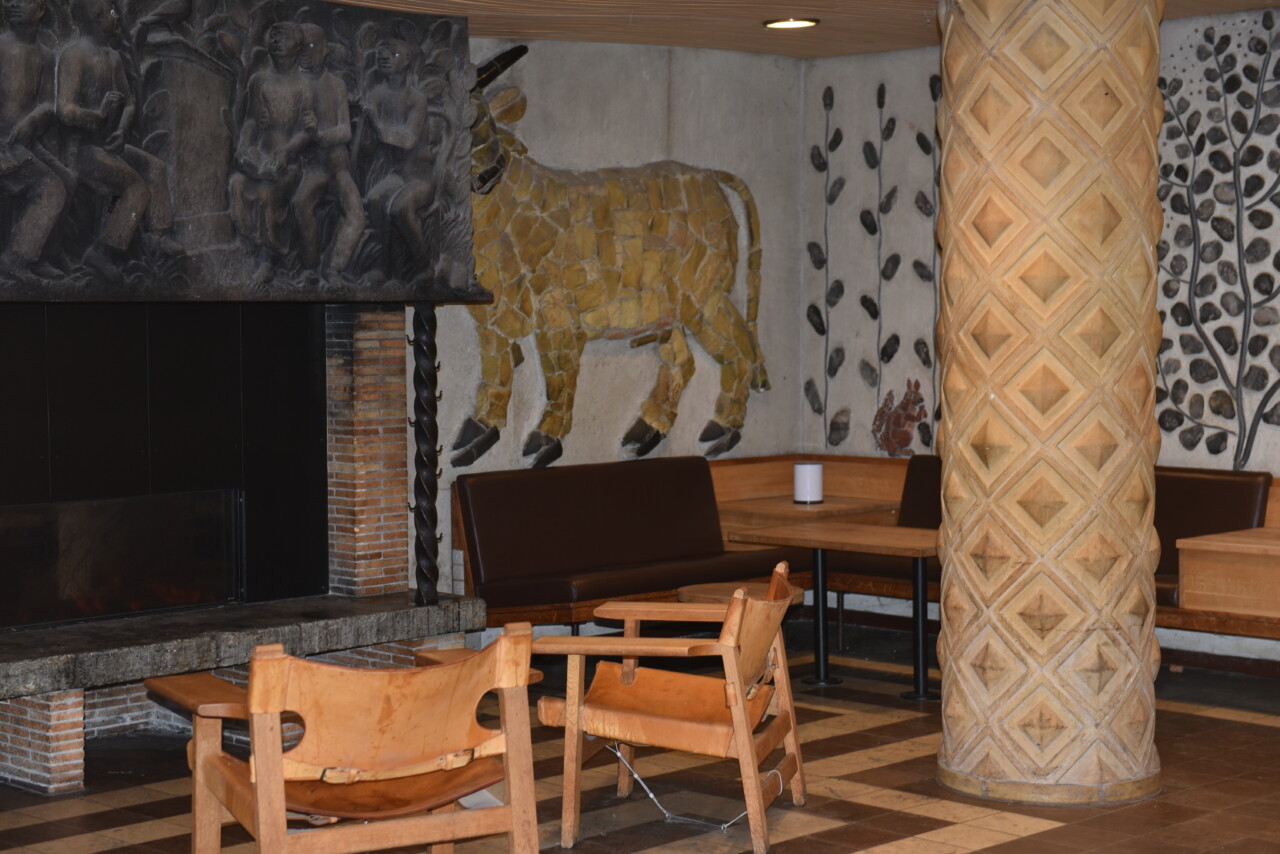Universitetsavisen
Nørregade 10
1165 København K
Tlf: 35 32 28 98 (mon-thurs)
E-mail: uni-avis@adm.ku.dk
—
Student life
Dorms Disclosed — The Egmont residence hall has a reputation for being the city's big party dorm, but the place has a lot more to offer than that. The food clubs, a close community, and lots of facilities, all help to bond the 469 residents together.
EGMONT
Nørre Allé 75, DK-2100 Copenhagen Ø
Monthly rent: DKK 2,715 per month (follows a price index).
Application process: Send a written application when new residents are admitted twice a year on 1 May and 1 November. The dorm’s committee will read your application and offer you a place if they think you will fit in.
Average age: 22-23 years-old.
Three tall brick buildings, in continuation of each other, but offset in a stagger formation, and opposite the Fælledparken. This is the setting of the Egmont residence hall. 469 students on higher education programmes in 22 corridors, each with their own shared kitchen.
The dorm’s motto is »more than a place to live«. But what this ‘more’ is, you will find out when you live there, according to Gritt Cortnum Andersen.
»We are perhaps known as the party dorm. But when you move in, you find out that the dorm is much more than that. You move in, and it is as if you get a new family. I live with 19 other people, and you really follow each other’s lives — for good or for worse. There are always people here to chat with.«
The kitchen, which is shared by 20- 24 residents, is what you would call a kitchen-dining room plus. It has a couch, a TV, and the dorm’s preferred beer, Maribo, always cold and available in quantity from the fridge. The common fridge is packed with a lot of other drinks, with and without alcohol, to brighten up life’s way, and three other refrigerators have a shelf for each of the residents’ own food.
SEE THE FULL ‘DORMS DISCLOSED’ UNIVERSITY POST SERIES: Reviews by student residents of dorms and residence halls in Copenhagen
The many cabinets in the kitchen are plastered with newspaper headlines that tell you about the occupant who owns the cupboard. ‘Smart and sharp’ and ‘pretty loud for someone who claims to be quiet’ are some of the headings on the cabinet door. Don’t you dare take anyone’s down – it is prohibited according to the dorm’s unwritten rules.
What is for dinner is defined by the chef of the day in the food club, which is every day throughout the week except on Fridays and Saturdays. Some kitchens even have Fridays. You write yourself on a list if are coming, and it’s a rare thing if the whole corridor is eating together at one time. Guests are welcome.
The food club is just one of the practical assignments shared between residents in the corridor. Everyone helps out.
On all of the dorm’s corridors, you find a metal plate, dish or bowl that appears to just lying there on the floor. But if you — heaven forbid — step on it or make a noise you have to give a round of beer to the entire corridor. You are only allowed to bang on the plate if there is food club or a corridor meeting.
Dorms disclosed
There are loads of dormitories, kollegiums, and student residences in Copenhagen, yet most of the information available is in Danish.
Some are small, old houses with pretty gardens, others are giant concrete buildings with tiny windows.
This is a review by a student reporter. But in the Dorms Disclosed series, it is the residents themselves that review the dorms that they live in.
Here is an overview with links to all of the dormitory and student accommodation reviews we have published so far, written by the people who know them the best.
If you want to write an English-language review of your dorm write to uni-avis@adm.ku.dk with ‘Dorms Disclosed’ in the subject header.
The residents’ democracy is in action at the monthly meeting, where a discussion over the big and small issues takes place. Practical and personal topics are discussed one at a time, and the meetings in this way become the small-scale democratic unit in the larger Egmont community. It is also at the corridor meeting that issues are discussed that need to be taken up to the large dorm residents’ council, where a representative from each of the corridors participates.
In addition to this, at time of writing, there are a total of 23 committees across the dorm. The committees are responsible for ensuring that things happen at the residence hall. They meet every month and organise parties, make sure that the residence hall has a working bike workshop, organise the European Championships soccer night on the big screen, and so on.
In December and January, as well as in May and June, there are quiet periods for exams. During these months of the year, craftsmen are not even allowed to do repairs.
We are known as the party dorm. But when you move in, you find out that the dorm is much more than that.
Gritt Cortnum Andersen, resident
To be able to find your way around the 22 corridors that all look the same in different pastel shades, you have to learn the dorm’s internal location lingo. The Egmont residence hall consists of three buildings in continuation of each other: Old, Middle and New. To denote a specific kitchen or corridor, it is combined with a floor name, so you can say, for example, »Come on up to the new-second for a hand of Canasta!”
The architect Kaj Gottlob set up curved, wood-clad ceilings and carved stone pillars in the foyer when the dormitory was built in the 1950s. The rooms were to be more ‘spartan’, as Hans Peter Jensen puts it.
The attractive foyer is there for a reason. It was built for the hotel guests that the residence hall housed during the summer for the first 20 years of its lifetime. The purpose was to bring in some revenues, so cheap rooms could be offered students.
After the student rebellion in the 1960s it was no longer trendy to move back home to your parents during the summer holidays, and the hotel service was stopped, explains Hans Peter Jensen, who lived at the dormitory in the 1960s. As ‘ephor’ he is the administrative head of the residence hall with an office on the ground floor, and a residence on the site, a little bit away from the dormitory building itself. The residents can drop by to talk to him. And his door is always open.
»Sometimes a resident comes by if they just need to talk about something. It might be something personal or something study-related. In fact, quite a lot of them do that,« says Hans Peter Jensen, who has served as the third ‘ephor’ – a kind of dorm officer – since 2004.
The dormitory has many rooms in common. The large hall is used for parties during the weekend, but also as a reading room on normal days, soccer viewing during the big championships and much more.
There is also a laundry room, a bike workshop, a training centre with loud music and heavy weights, and two common gardens. And there is the concert hall Musica with two rhythmic rehearsal rooms with drum sets and amplifiers, and three acoustic rooms with a piano in each. For about DKK 100 per month, you can get access to the music rooms and practise with your instrument or band.
The dorm has a regular ‘Tour de Chambre’ – a party where you visit each other’s rooms in the corridor with a theme in each — a floor walk, which is a theme party, where each corridor has a theme, an annual revue and a three-day festival.
Twice a week, a yoga instructor drops by and does yoga with anyone who wants to join in.
»And it’s quite popular,« says Gritt Cortnum Andersen.
So if you are into parties, food clubs and corridor communities, send your application to Egmont the next day they are looking for new residents. Maybe you are among the lucky 100-120 who get a place every year.
[This review has been written by a student reporter at the University Post. If you want to write an English-language review of your dorm write to uni-avis@adm.ku.dk and mark it ‘Dorms Disclosed’]
READ ABOUT OTHER RESIDENCE HALLS AND DORMS HERE: Student housing reviews: Dorms and residences in Copenhagen


